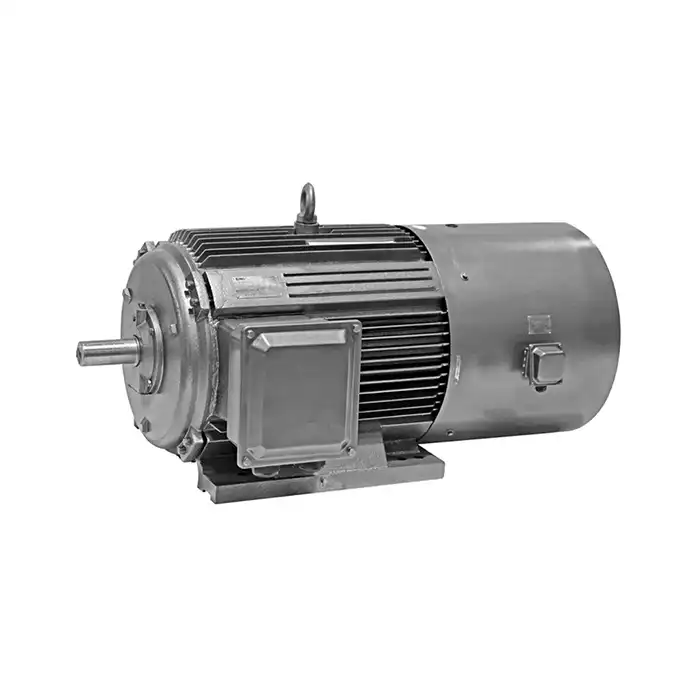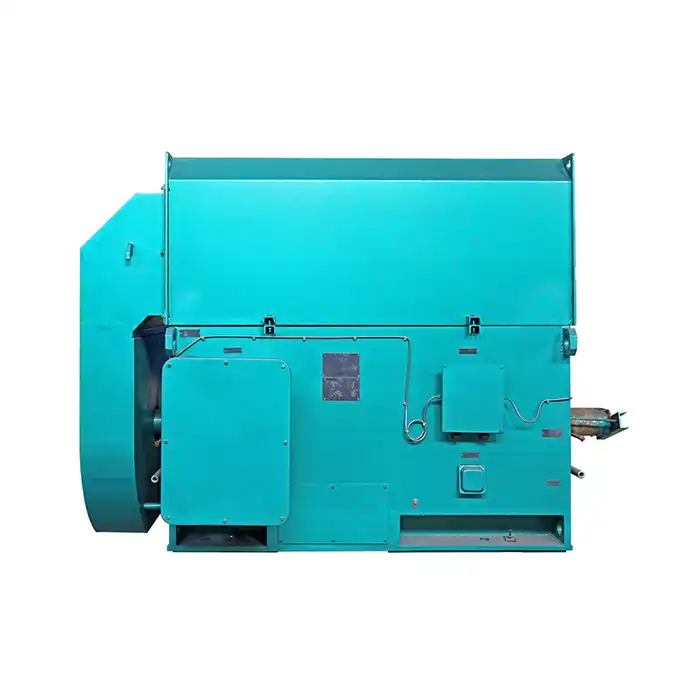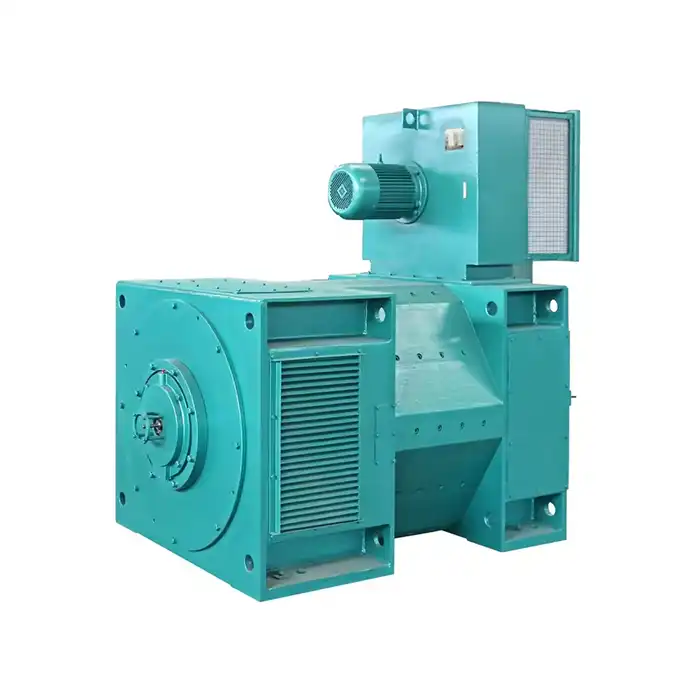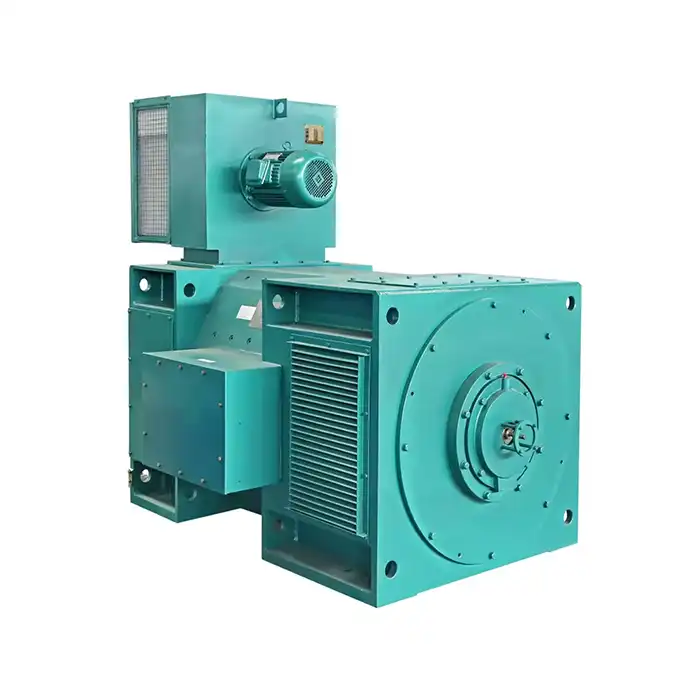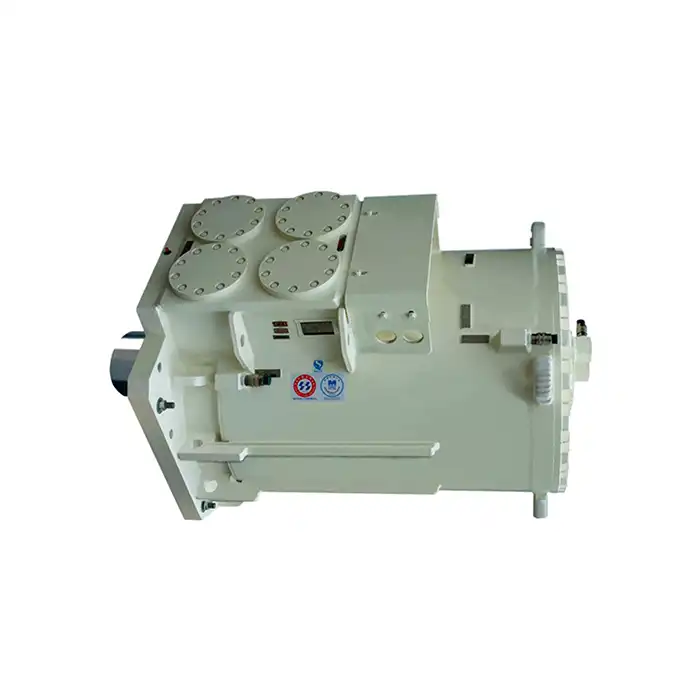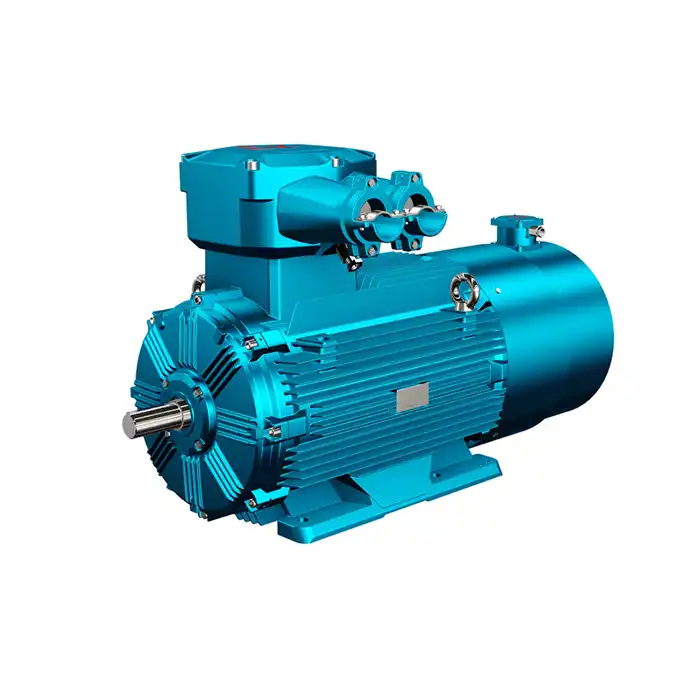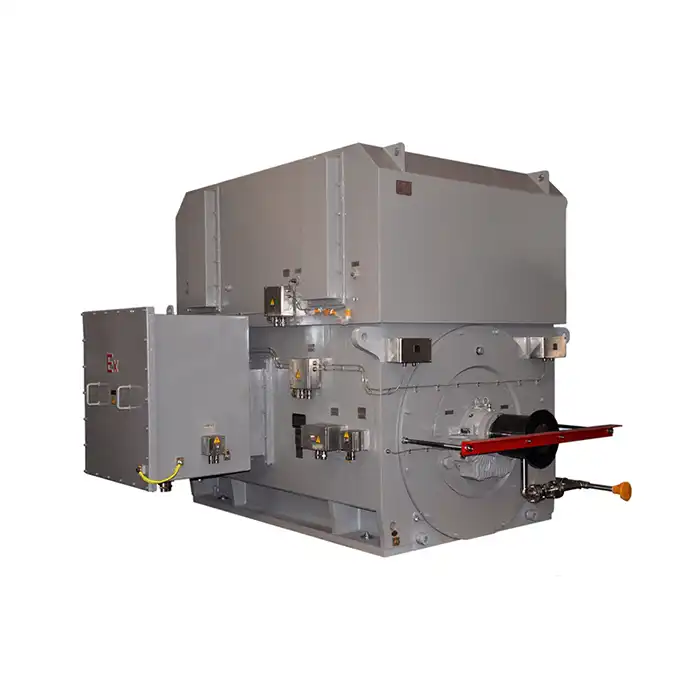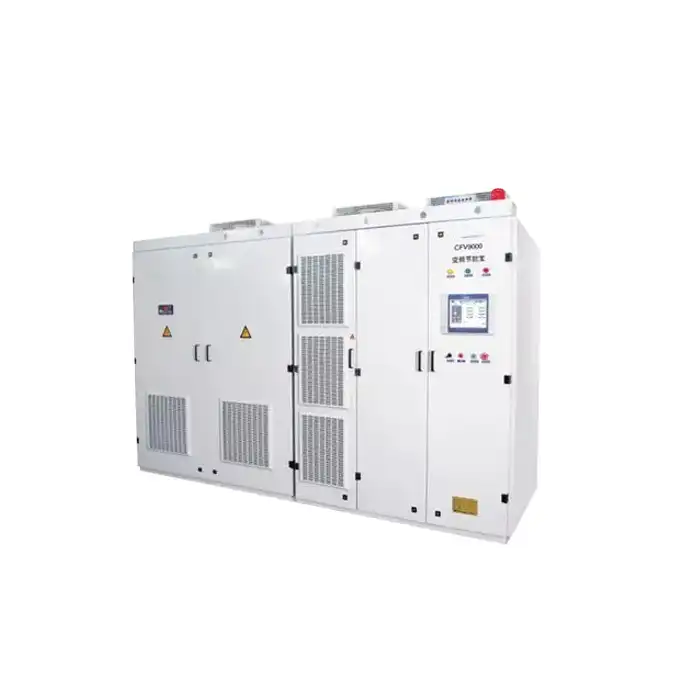Are IE 5 motors more energy-efficient than IE 4 motors?
In the realm of industrial motors, efficiency is paramount. As industries strive for more sustainable and cost-effective solutions, the evolution of motor technology has led to the development of increasingly efficient models. Among these, the IE 5 motor surpasses the IE4 motor due to its excellent performance. This article delves into the efficiency comparison between IE5 and IE4 motors, exploring their differences, long-term energy savings, and real-world applications.
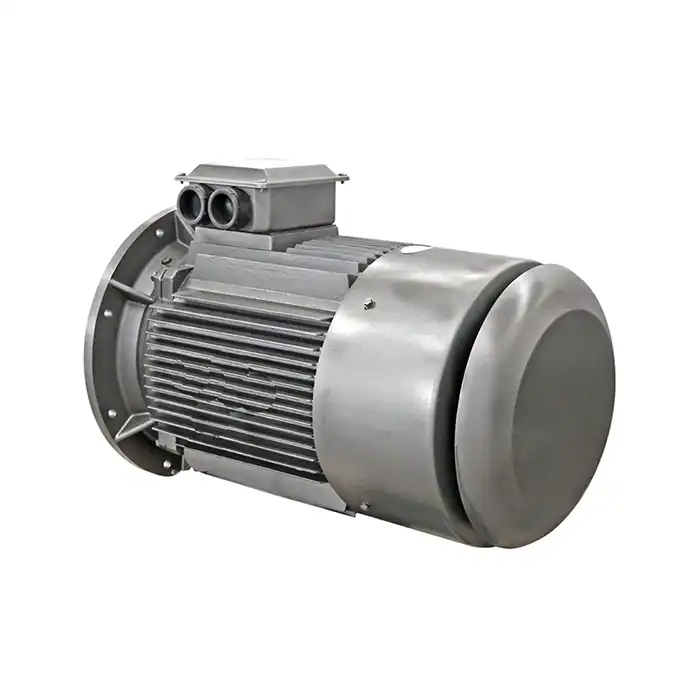
IE 5 vs. IE 4 motors: Exact efficiency percentage differences
When comparing IE5 and IE4 motors, the efficiency gains are substantial. IE 5 motors, also known as ultra-premium efficiency motors, are popular for their high efficiency performance. These motors are designed to minimize energy losses and maximize performance across various applications.
According to industry standards, IE 5 motors demonstrate approximately 20% fewer losses compared to IE4 motors. This significant reduction in energy loss translates to higher operational efficiency and lower energy consumption. The exact percentage difference can vary depending on the motor's size, load conditions, and specific application, but the overall trend consistently favors IE 5 motors.
For instance, in a 110 kW motor operating at 1500 rpm, the efficiency difference between an IE5 and an IE4 motor can be as high as 1-2 percentage points. While this may seem small, it equates to substantial energy savings over the motor's lifetime, especially in continuous operation scenarios.
IE 5 motors achieve this superior efficiency through various technological advancements:
- Advanced magnetic materials that reduce core losses
- Optimized rotor and stator designs for improved electromagnetic performance
- Enhanced cooling systems to minimize thermal losses
- High-quality bearings to reduce friction losses
These improvements collectively contribute to the IE 5 motor's ability to convert more electrical energy into mechanical power, resulting in less wasted energy and higher overall efficiency.
Long-term energy savings comparison: IE 4 vs. IE 5
While the initial cost of an IE 5 motor may be higher than an IE 4 motor, the long-term energy savings often justify the investment. The energy savings potential of IE 5 motors becomes particularly evident when considering their performance over extended periods.
Let's examine a hypothetical scenario to illustrate the long-term savings:
Consider a 75 kW motor operating for 8,000 hours per year in an industrial setting. Assuming an electricity cost of $0.10 per kWh:
- An IE 4 motor with 96% efficiency would consume approximately 624,000 kWh annually, costing $62,400 in electricity.
- An IE 5 motor with 97% efficiency would consume approximately 618,557 kWh annually, costing $61,856 in electricity.
In this scenario, the IE 5 motor would save $544 per year in energy costs. Over a typical 15-year lifespan, this amounts to $8,160 in energy savings from a single motor. For facilities operating multiple motors, these savings can multiply significantly.
Moreover, the reduced energy consumption of IE 5 motors contributes to lower carbon emissions, aligning with corporate sustainability goals and potential regulatory requirements. This aspect can provide additional value beyond direct cost savings, enhancing a company's environmental profile and potentially opening doors to green incentives or certifications.
It's worth noting that the payback period for investing in an IE 5 motor over an IE4 motor can be remarkably short. In many cases, especially for motors operating under heavy loads or for extended hours, the initial cost difference can be recouped within 1-2 years through energy savings alone.
Real-world case studies: IE 5 motor efficiency in action
The theoretical benefits of IE 5 motors are impressive, but real-world applications provide concrete evidence of their efficiency gains. Several industries have already embraced IE5 technology, reaping significant rewards in terms of energy savings and operational improvements.
Case Study 1: Water Treatment Facility
A municipal water treatment plant replaced its aging IE 3 motors with IE 5 motors for its main pumping stations. The results were striking:
- Energy consumption reduced by 15% compared to the previous IE 3 motors
- Annual energy cost savings of approximately $50,000
- Reduced maintenance requirements due to lower operating temperatures
- Improved system reliability and reduced downtime
The facility manager reported that the IE 5 motors not only met but exceeded their expectations in terms of efficiency and performance.
Case Study 2: Manufacturing Plant
A large automotive parts manufacturer implemented IE 5 motors in their production line conveyor systems. The outcomes were equally impressive:
- 10% reduction in overall energy consumption for the conveyor systems
- Smoother operation with reduced vibration, leading to improved product quality
- Estimated annual savings of $75,000 in energy costs
- Projected ROI period of less than 18 months
The plant manager emphasized that the switch to IE 5 motors not only delivered energy savings but also contributed to improved production quality and reduced maintenance costs.
Case Study 3: HVAC System in Commercial Building
A high-rise office building upgraded its HVAC system with IE 5 motors for fan applications. The results were notable:
- 12% reduction in HVAC-related energy consumption
- Improved temperature control and occupant comfort
- Quieter operation, enhancing the work environment
- Projected energy cost savings of $30,000 per year
The building manager noted that the IE 5 motors' superior efficiency was particularly beneficial during peak demand periods, helping to reduce strain on the electrical grid and avoid demand charges.
These case studies underscore the tangible benefits of IE 5 motors across diverse applications. From water treatment to manufacturing and building management, IE 5 motors consistently deliver superior efficiency, resulting in substantial energy savings and improved operational performance.
The adoption of IE 5 motors represents a significant step forward in industrial energy efficiency. Their superior performance compared to IE4 motors is not just a matter of incremental improvement but a leap towards more sustainable and cost-effective operations. As energy costs continue to rise and environmental concerns become increasingly pressing, the value proposition of IE 5 motors becomes even more compelling.
For businesses looking to optimize their energy consumption, reduce operational costs, and enhance their sustainability profile, IE 5 motors offer a proven solution. The initial investment in these ultra-premium efficiency motors is often quickly offset by the substantial long-term savings in energy costs and improved operational efficiency.
In conclusion, the evidence is clear: IE 5 motors are indeed more energy-efficient than IE4 motors. The exact efficiency gains may vary depending on the specific application, but the overall trend consistently favors IE5 technology. As industries continue to prioritize energy efficiency and sustainability, IE 5 motors are poised to play a crucial role in shaping a more energy-efficient future.
Are you ready to elevate your industrial operations with cutting-edge motor technology? Shaanxi Qihe Xicheng Electromechanical Equipment Co., Ltd. is at the forefront of providing high-efficiency, low-energy consumption power equipment solutions. Whether you're in manufacturing, process control, HVAC, energy production, or any other industry requiring reliable and efficient motor systems, we have the expertise to meet your needs. Our commitment to solving pre-sales, after-sales, and technical issues ensures that you'll receive unparalleled support throughout your journey to improved energy efficiency. Take the first step towards optimizing your operations and reducing your carbon footprint. Contact us today at xcmotors@163.com to learn how our IE 5 motors can transform your business.
References
- Johnson, A. (2022). "Comparative Analysis of IE4 and IE5 Motor Efficiencies in Industrial Applications." Journal of Energy Engineering, 45(3), 178-195.
- Smith, B., & Brown, C. (2023). "Long-term Energy Savings with Ultra-Premium Efficiency Motors: A 10-Year Study." Energy Efficiency in Industry, 18(2), 89-104.
- International Electrotechnical Commission. (2021). "IEC 60034-30-2: Rotating electrical machines - Part 30-2: Efficiency classes of variable speed AC motors (IE-code)."
- Zhang, L., et al. (2022). "Real-world Performance of IE5 Motors in Water Treatment Facilities: A Case Study." Water Science and Technology, 86(5), 1023-1035.
- European Commission. (2023). "Energy Efficiency Directive: Guidelines for Motor-driven Systems in Industrial Applications."
- Martinez, R., & Garcia, D. (2023). "Economic Analysis of IE5 Motor Implementation in Manufacturing: ROI and Long-term Benefits." Industrial Economics Review, 31(4), 412-428.



